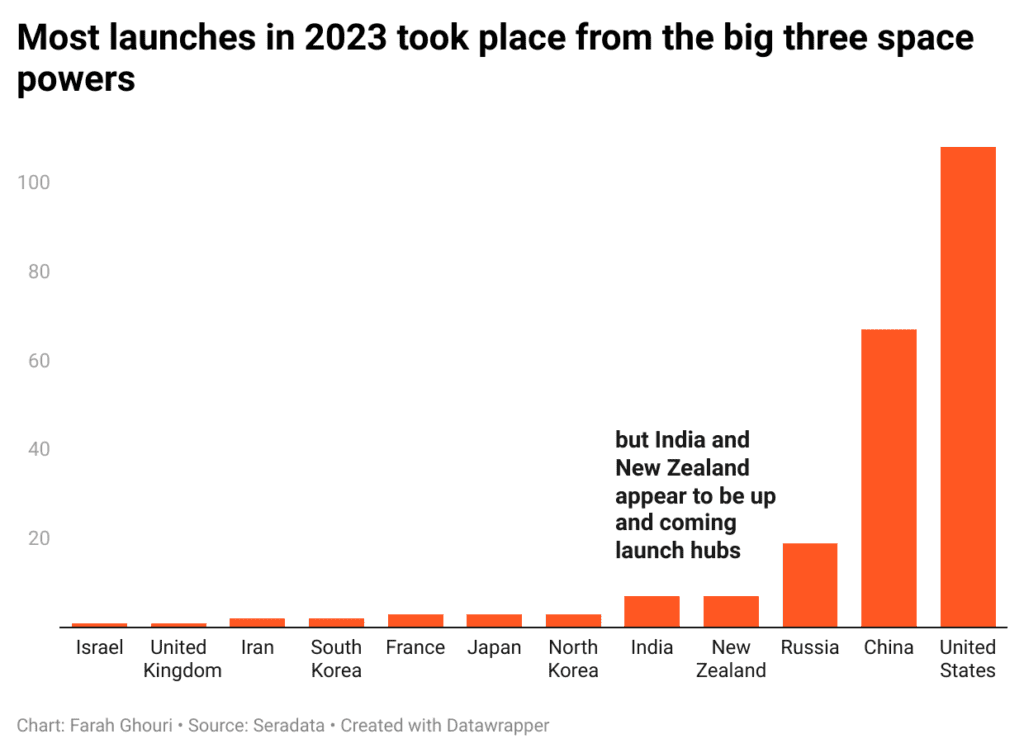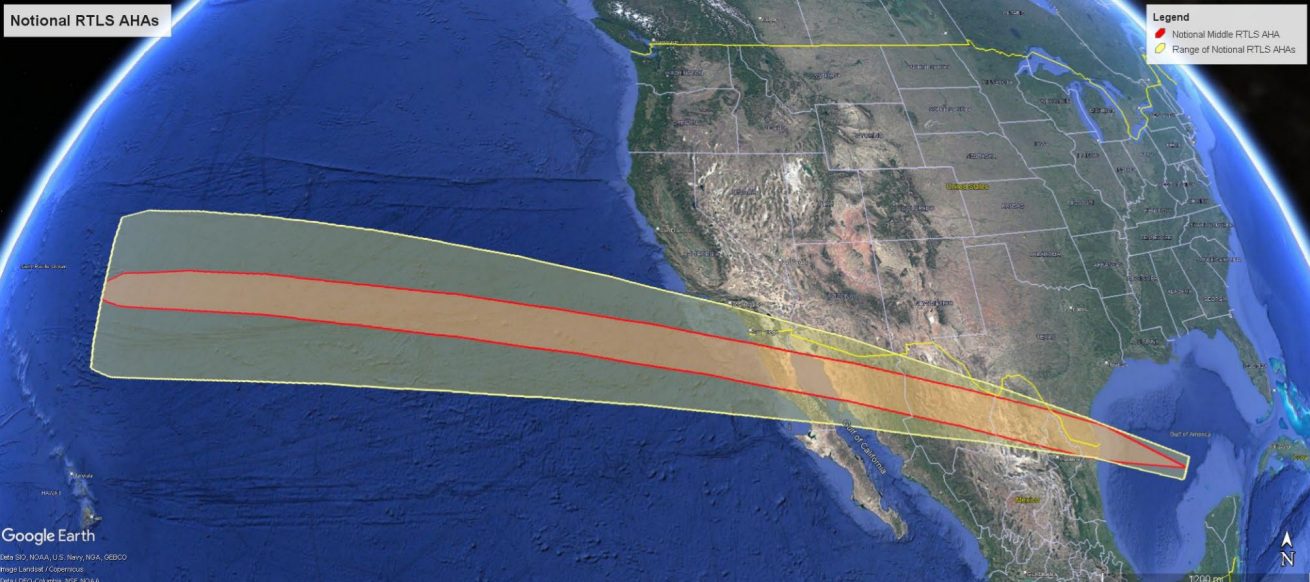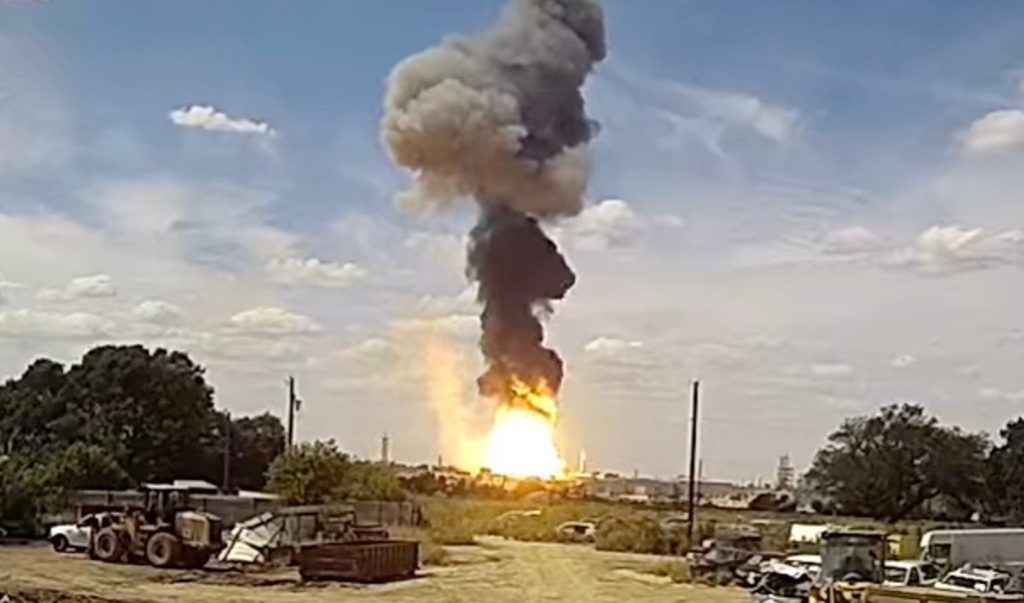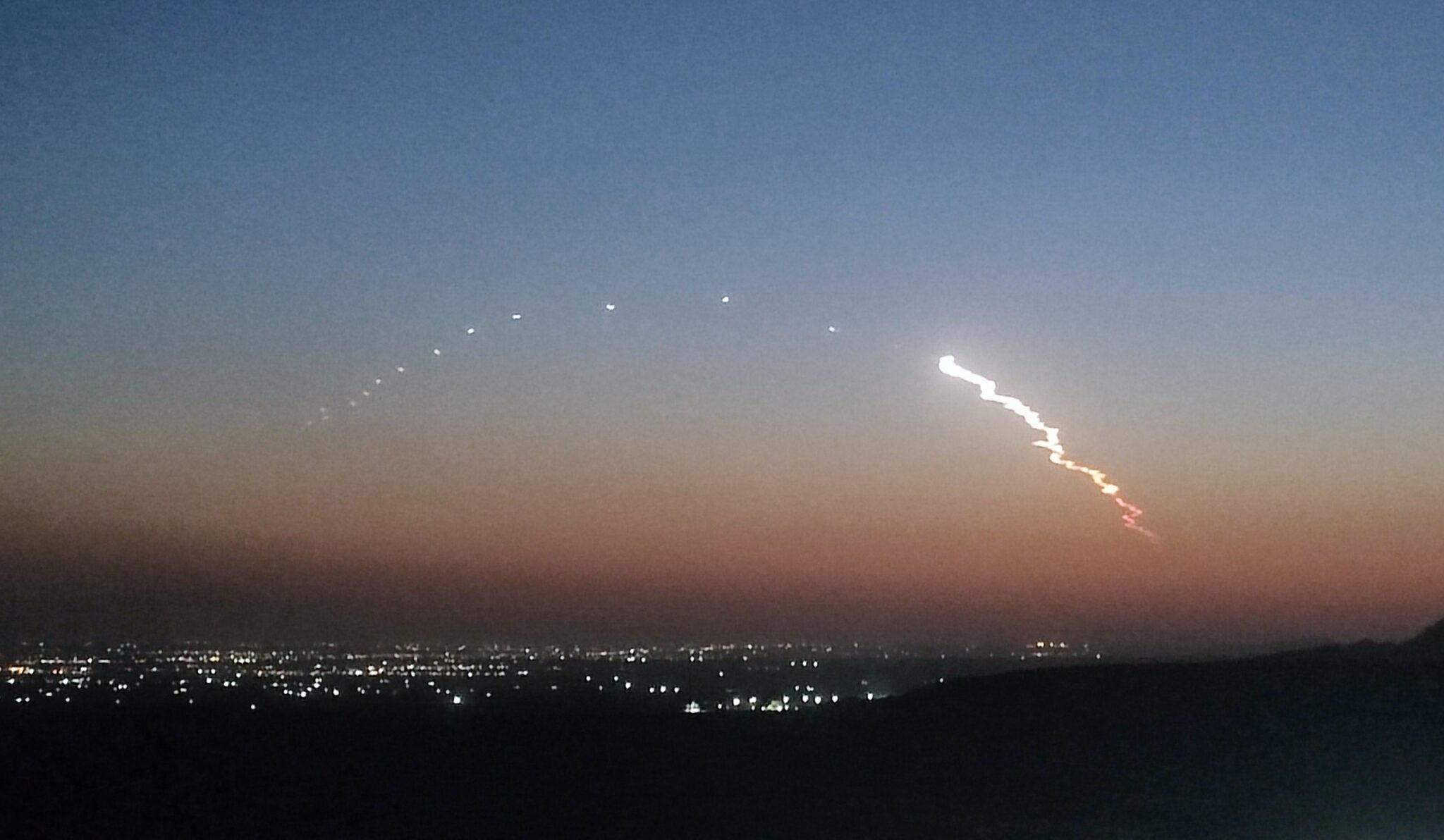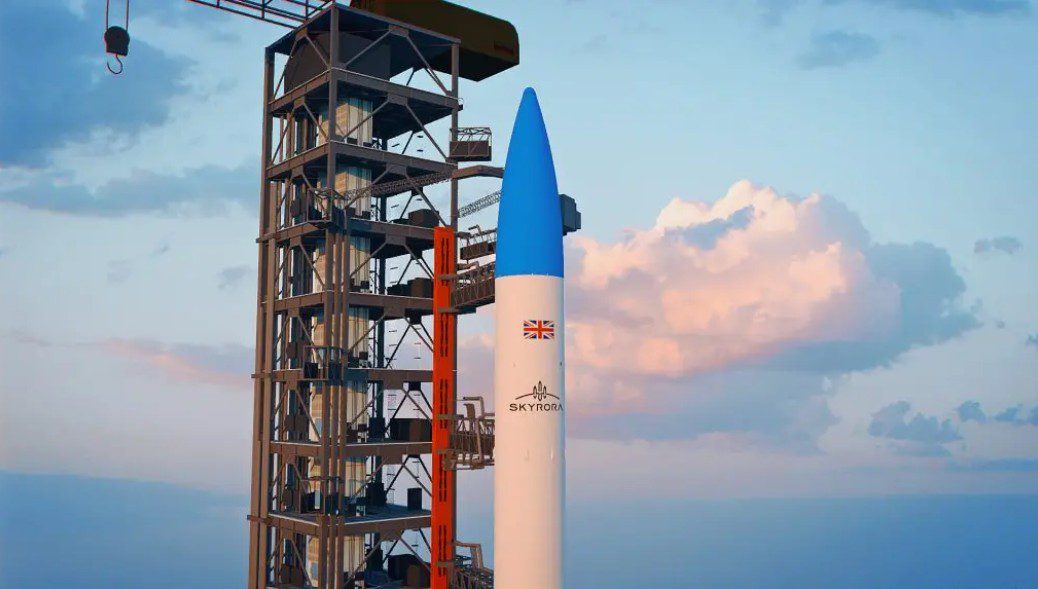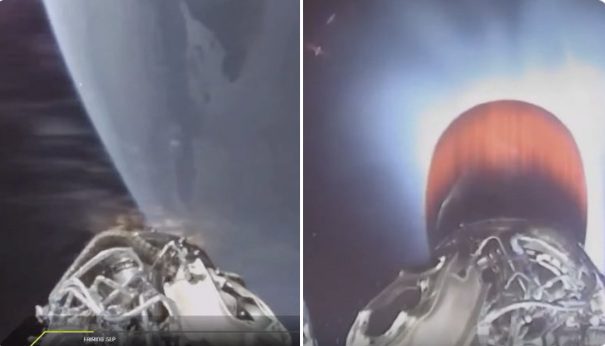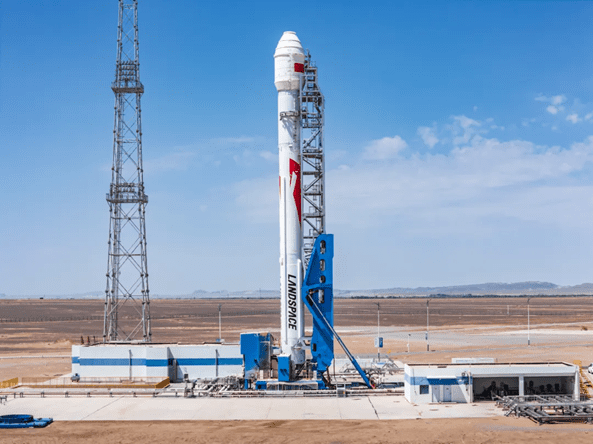The number of launches has broken the all-time record – again. This year there were 223 orbital launch attempts, which breaks last year’s record of 186 attempts. This continues the trend since 2019, and the general trend since 2005, of an ever-increasing number of launches. SpaceX dominated the market with just under half the flights. With a total of 98 orbital launch attempts (Falcon 9, Falcon Heavy and Starship), it came top of the launch providers but just missed its 100-launch annual target.
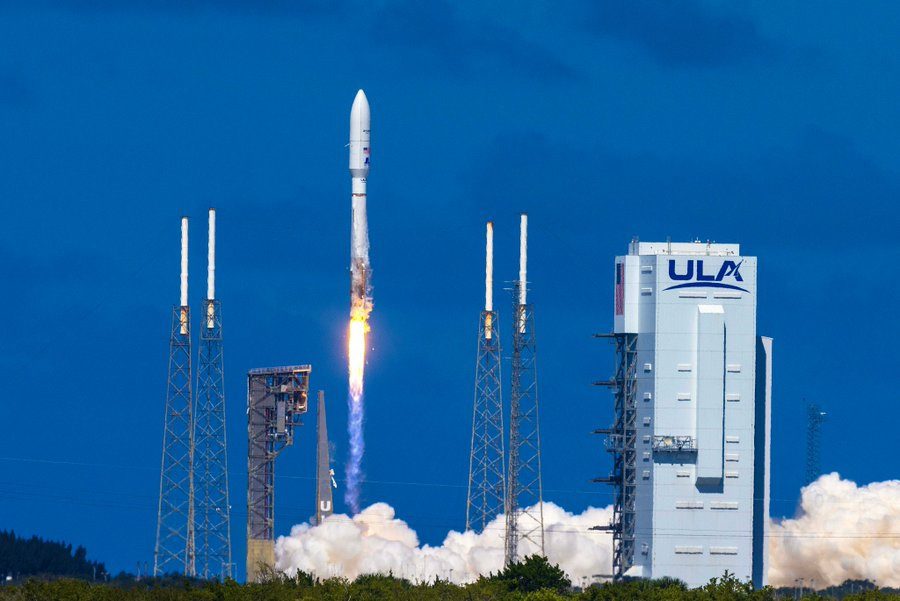
Atlas V 501 launches KuiperSats-1 and -2 into orbit. Courtesy: Amazon
One interesting point is that the number of satellites attempted to be carried to orbit last year – while still a record at 2,946 – would have been even higher had SpaceX’s Falcon 9 Starlink launches still had the older and smaller Starlink v1.5 designs aboard. Since SpaceX moved to a larger Starlink satellite bus platform, the V2 Mini, the number of satellites carried is 21-23 per Falcon 9 flight, about half the number that Falcon 9 launches used to carry. With Falcon 9 Starlink flights dominating orbital deliveries, this had a slight slowing effect, although the increase was still dramatic.
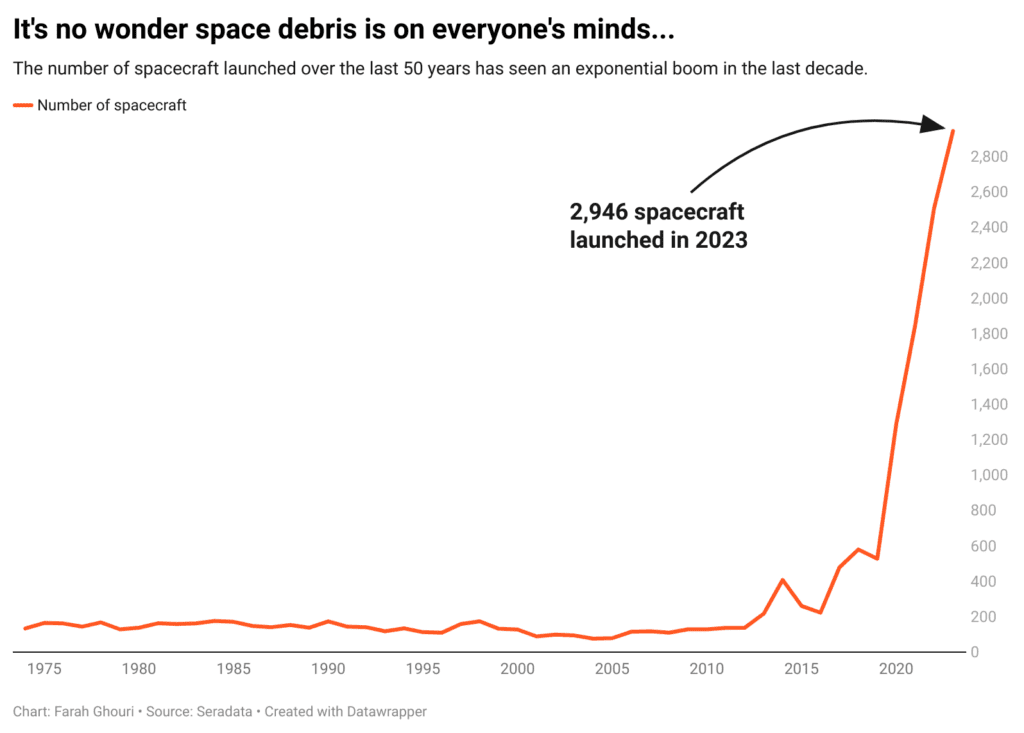
With SpaceX playing so prominent a role, it is understandable that the US was the out-and-out winner in the launch country stakes with 108 attempts. China came second with 67 while Russia was a poor third at 19. India and New Zealand shared fourth place with seven flights each. The rest had three or less apiece. This was especially embarrassing for the Franco-European Arianespace effort with only three flights.
Of the launch attempts covered, there were 15 total or partial failures – defined as when at least one spacecraft fails to achieve its final position in good condition. Some of these were obvious, such as the glorious failures of the Starship/SuperHeavy IFT-1 and -2 test flights (classed as fractional orbital attempts), the Virgin Orbit LauncherOne failed flight from Cornwall, the RS-1 BLOCK 1 (ABL) failure and the maiden launch failure of the H-3. Others were more subtle involving, for instance, spacecraft failing to leave their dispenser located on the rocket’s upper stage. A couple of Falcon 9 launches were marred in this way. The unadjusted failure rate overall was “average” at 6.7 per cent.
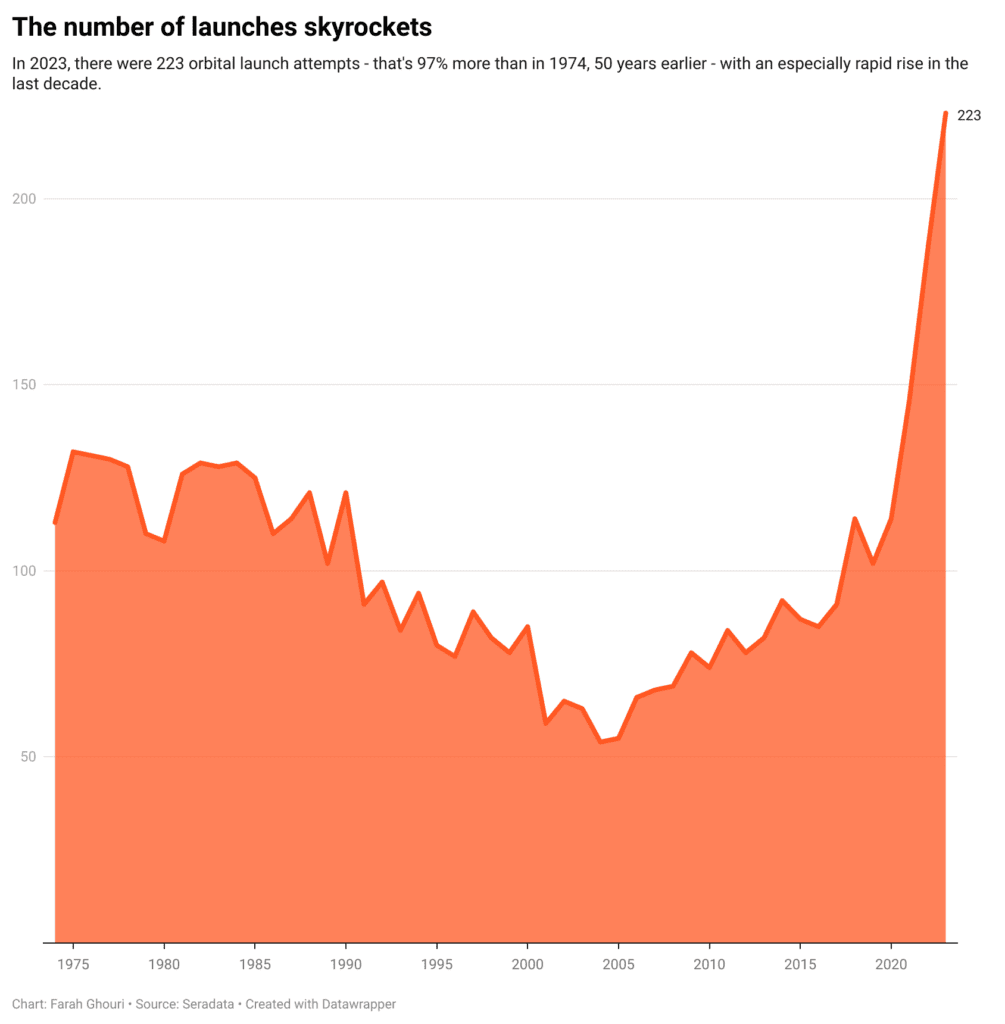
A closer look at the numbers shows that the number of launches in 2023 increased by 20 per cent compared with 2022. Although healthy, this marked a slight slowdown in the rate of growth in annual launches seen in the last three years. However, the story is clear: there are more orbital launches being attempted than ever before. In four of the last ten years, there has been a jump of 20 per cent or more, with a particularly significant increase between 2020 and 2021, when launches rose by 28 per cent. The number of launches has more than doubled since 2019, when 102 were recorded.
In terms of deployments into space, in 2023 there were 2,799 spacecraft released from launch vehicles, 62 by OTV/delivery spacecraft, 20 from space stations (mainly the ISS), while a rover was released from an independent lander.
